Working with Metal-Infused Filaments
Gareth's Tips, Tools, and Shop Tales - Issue #40
Got a tip to share? Tools to recommend? Shop tales to tell? Talk to me.
The latest issue of HackSpace (#29) is out (free PDF). This month’s theme is working with wood. I have a 4-page piece in the issue (pg 92) rounding up 3D printing tips and tricks (see one of them below).
Working with Metal-Infused Filaments
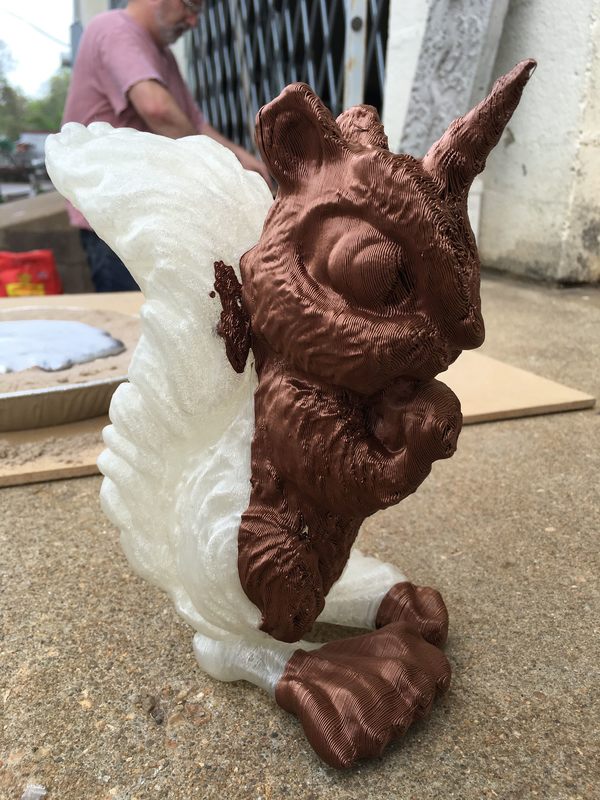
3D printed mold incorporating some copper-infused filament.
From my piece in issue 29 of HackSpace: Washington, DC-area artist and curator Dave Mordini shared this discovery with me. “I took an old broken lawn ornament and put new feet on it. I then 3D-scanned it using an inexpensive consumer scanner. I decided to add pizzazz to an aluminum casting of it by using copper-infused filament when 3D printing my mold. The 3D-printed mold is packed in sand. When you pour the hot aluminum into the mold, the plastic part gets burned away, but the copper remains.”
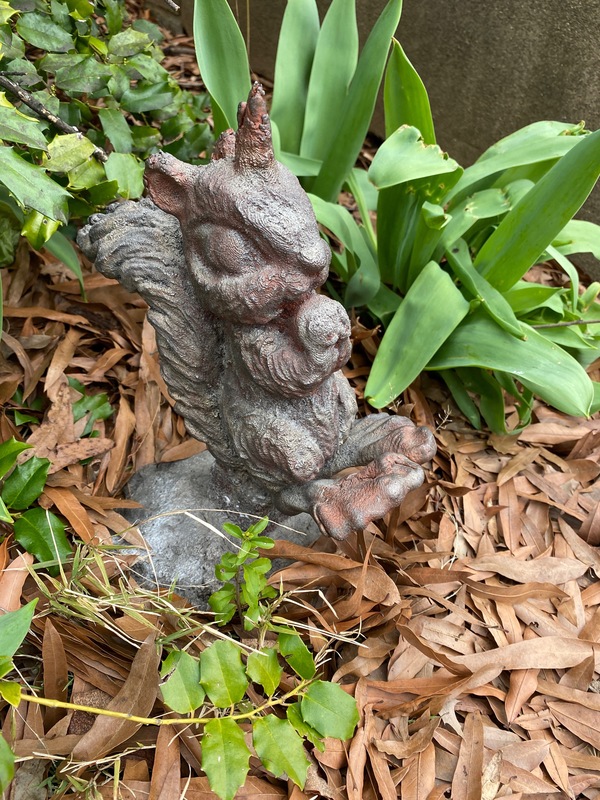
The finished lawn ornament.
Magnets in the Shop
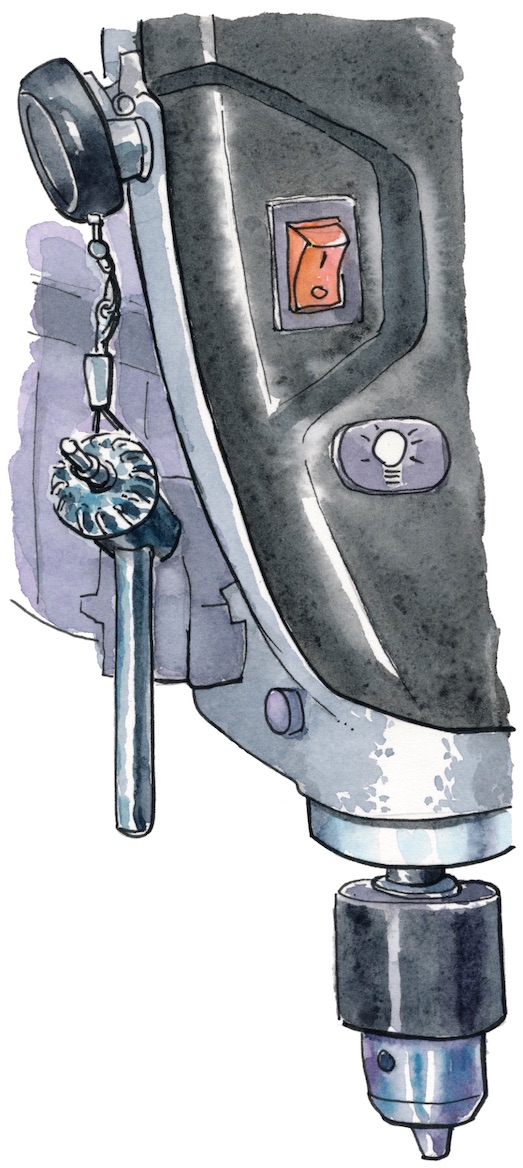
Illustration by Richard Sheppard for “Tips and Tales from the Workshop.”
For my next HackSpace column, I am doing a round-up of cool things you can do with magnets in your shop (and in your projects). If you have any good ideas, please share. Here is one of the magnet-related tips from my book, Tips and Tales fr0m the Workshop.
Save Your Drill Press Chuck on a Key Ring: Tired of losing the chuck on your drill press? Use a retractable magnetic key ring to store it close at hand by mounting it on the press itself. [Sean Michael Ragan]
Make:’s Adhesive Chart
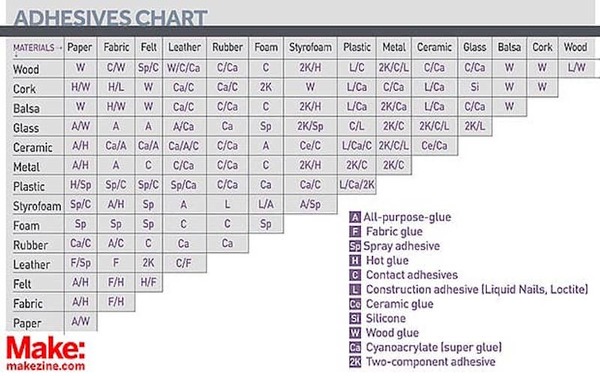
Sticking this to that.
Someone posted the above chart to the “Shop Hacks” group on Facebook which reminded me to share it here. We included one of these charts in the Maker’s Notebook that I edited and on the Make: website. Here is a larger version.
The Maker’s Muse
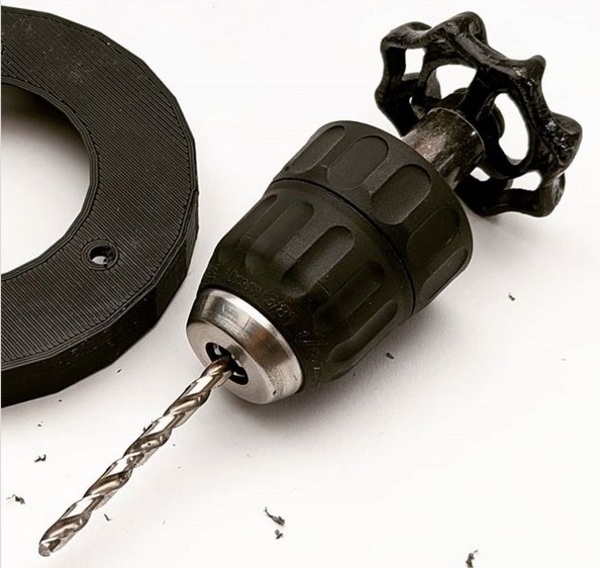
Sean’s DIY twist drill.
Via Sean Ragan’s Instagram: “A chuck from an obsolete DeWalt cordless drill fit with standoff and a spigot handle for manual drilling, reaming, chamfering, deburring, etc.”
Using a Sewing Machine Needle as a Drill?
Shop Talk
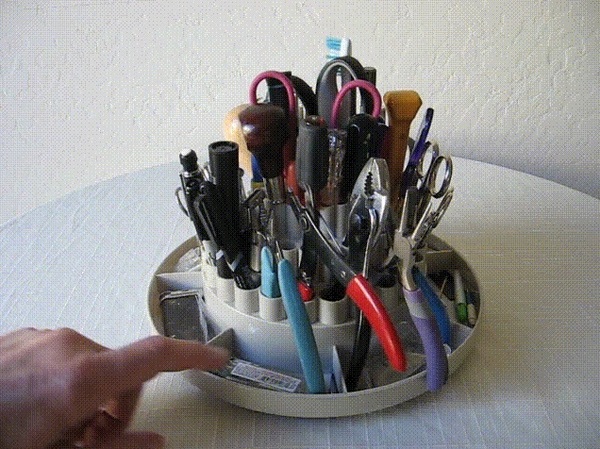
Larry Albertelli’s homely tool carousel
I’ve been getting some wonderful messages and photos in response to my “homely tools” request in the last issue. Show me (and tell me about) your homely tools.
***
Larry Albertelli writes: I have small plastic bottles with different tips, including needle tips, and small vials, with tiny funnels that fit them all. In them I put homemade lubes, solvents, diluted E6000, diluted Lexel. I have plastic and glass syringes with sharp and blunt tips to dispense minute quantities of various lubes and glues. Microbrushes, small makeup brushes, scalpels of various sizes, a carbide tool sharpener which sharpens any blade, from #11 scalpel blade to scissors blades, razor blades, utility blades, you name it, in seconds. The list goes on and on. These are the backbone of a tinkerer/hobbyist/maker.
Reader John Young also wrote to remind us all of the oldie but goodie of tacking up an old hacksaw blade on the edge of a workbench or elsewhere to use for cutting sandpaper to size. You can also use such an arrangement to cut kraft paper and other similar materials.
04/2/20(Gareth’s Tips, Tools, and Shop Tales is published by Cool Tools Lab. To receive the newsletter a week early, sign up here. — editors)









